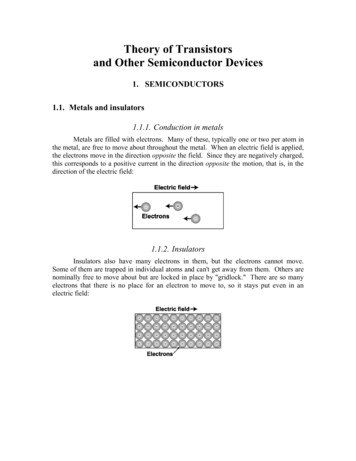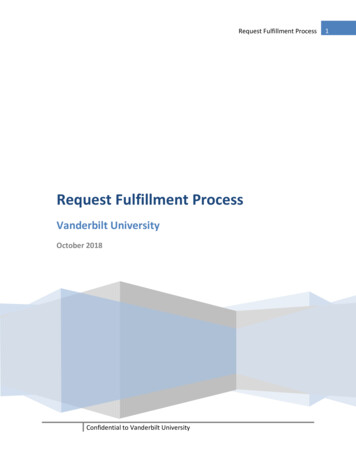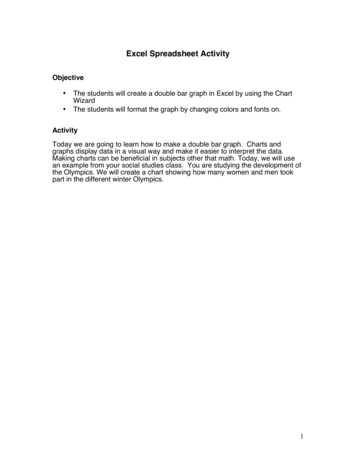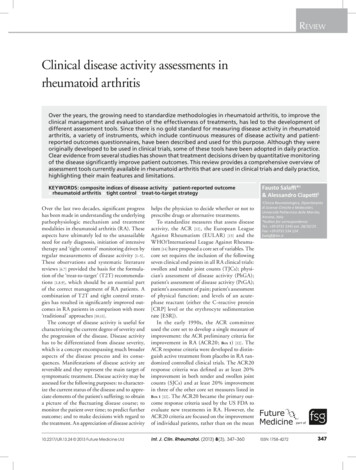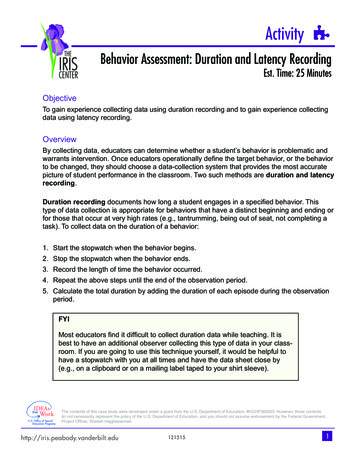
Transcription
Activity THEIRISCENTERBehavior Assessment: Duration and Latency RecordingEst. Time: 25 MinutesObjectiveTo gain experience collecting data using duration recording and to gain experience collectingdata using latency recording.OverviewBy collecting data, educators can determine whether a student’s behavior is problematic andwarrants intervention. Once educators operationally define the target behavior, or the behaviorto be changed, they should choose a data-collection system that provides the most accuratepicture of student performance in the classroom. Two such methods are duration and latencyrecording.Duration recording documents how long a student engages in a specified behavior. Thistype of data collection is appropriate for behaviors that have a distinct beginning and ending orfor those that occur at very high rates (e.g., tantrumming, being out of seat, not completing atask). To collect data on the duration of a behavior:1. Start the stopwatch when the behavior begins.2. Stop the stopwatch when the behavior ends.3. Record the length of time the behavior occurred.4. Repeat the above steps until the end of the observation period.5. Calculate the total duration by adding the duration of each episode during the observationperiod.FYIMost educators find it difficult to collect duration data while teaching. It isbest to have an additional observer collecting this type of data in your classroom. If you are going to use this technique yourself, it would be helpful tohave a stopwatch with you at all times and have the data sheet close by(e.g., on a clipboard or on a mailing label taped to your shirt sleeve).The contents of this case study were developed under a grant from the U.S. Department of Education, #H325F060003. However, those contentsdo not necessarily represent the policy of the U.S. Department of Education, and you should not assume endorsement by the Federal Government.Project Officer, Shedeh 1515n1
Activity THEIRISCENTERBehavior Assessment: Duration and Latency RecordingEst. Time: 25 MinutesOverview [Cont.]Tips for ImplementationWhen collecting this type of data, be sure your behavior definition specifiesthe length of time that the behavior must occur in order to “count.” For example, you might specify that a student is off-task when his or her behaviorlasts for longer than five (5) seconds.Latency recording measures the amount of time that lapses between an antecedent (e.g.,teacher’s directive) and when the student begins to perform a specified behavior. This typeof data collection is appropriate for behaviors that follow a command or directive, or a distinctstimulus. For example, the teacher might expect the student to be in his seat and ready forclass within ten seconds of the bell ringing. To collect data on latency:1. Start the stopwatch when the antecedent is provided.2. Stop the stopwatch when the behavior occurs.3. Record the number of seconds or minutes that elapsed between the end of the antecedentand the onset of the behavior.4. Repeat the above steps until the end of the observation period.FYIAs with duration data, latency data can be difficult to collect while teaching.To make it easier, have your stopwatch and data sheet readily available.Also, take care to define exactly what behavior you are looking for that will“count” as the behavior occurring. For example, if a teacher is collectingdata on a student who is chronically tardy, she would start timing when thebell rings. She might stop timing when the student was physically sitting inhis desk. Another teacher may take the same type of data, but stop timingwhen the student entered the classroom. Defining these behaviors is crucialto maintain consistency in your data-collection efforts.http://iris.peabody.vanderbilt.edu121515n2
Activity THEIRISCENTERBehavior Assessment: Duration and Latency RecordingEst. Time: 25 MinutesActivityView the video at on-and-latency/. Use theattached duration recording form to record instances of the student’s off-task behavior. Thenview the video again and use the attached latency recording form to record how long it takesthe student to begin a task after the teacher gives a prompt. Be sure to use the stopwatchwhen recording your data.Questions/Discussion Topics1. According to the duration data, what percentage of time was the student off task?2. Do you think the percentage of time that the student was engaged in off-task behavior isproblematic? Explain.3. According to the latency data, when the teacher gave the initial directive for the class tobegin working, how long was it before the student began the task?4. After redirecting the student, how long was it before the student began the task?5. Do you think the amount of time it took the student to begin the task after the teacher’sinitial directions and after being redirected is problematic? Explain.http://iris.peabody.vanderbilt.edu121515n3
Activity THEIRISCENTERBehavior Assessment: Duration and Latency RecordingEst. Time: 25 MinutesDuration Recording FormStudent: KailynDate:1/01/xxClass/ Teacher: Language/ Mrs. Oliver Observer: Mrs. HandTarget/problem behavior: During independent math activities, Kailyn engagesin off-task behaviors, which refers to any behavior lasting 5 seconds orlonger that deviates from teacher instruction (e.g., looking around theroom, playing with her hands or other objects).Start TimeEnd TimeDurationTotal time observed:Total time off-task (sec):Percentage of time 4
Activity THEIRISCENTERBehavior Assessment: Duration and Latency RecordingEst. Time: 25 MinutesLatency Recording FormStudent: KailynDate:1/01/xxClass/ Teacher: Language/ Mrs. Oliver Observer: Mrs. HandTime/Length of Observation: During independent math activities, Kailyn willbegin working on her assignment within five seconds after a teacherprompt (e.g. directions, redirection).Start Time(Time of avior was initiated)121515Latencyn5
data using latency recording. Overview By collecting data, educators can determine whether a student’s behavior is problematic and warrants intervention. Once educators operationally define the target behavior, or the behavior to be changed, they should choose a File Size: 245KBPage Count: 5






